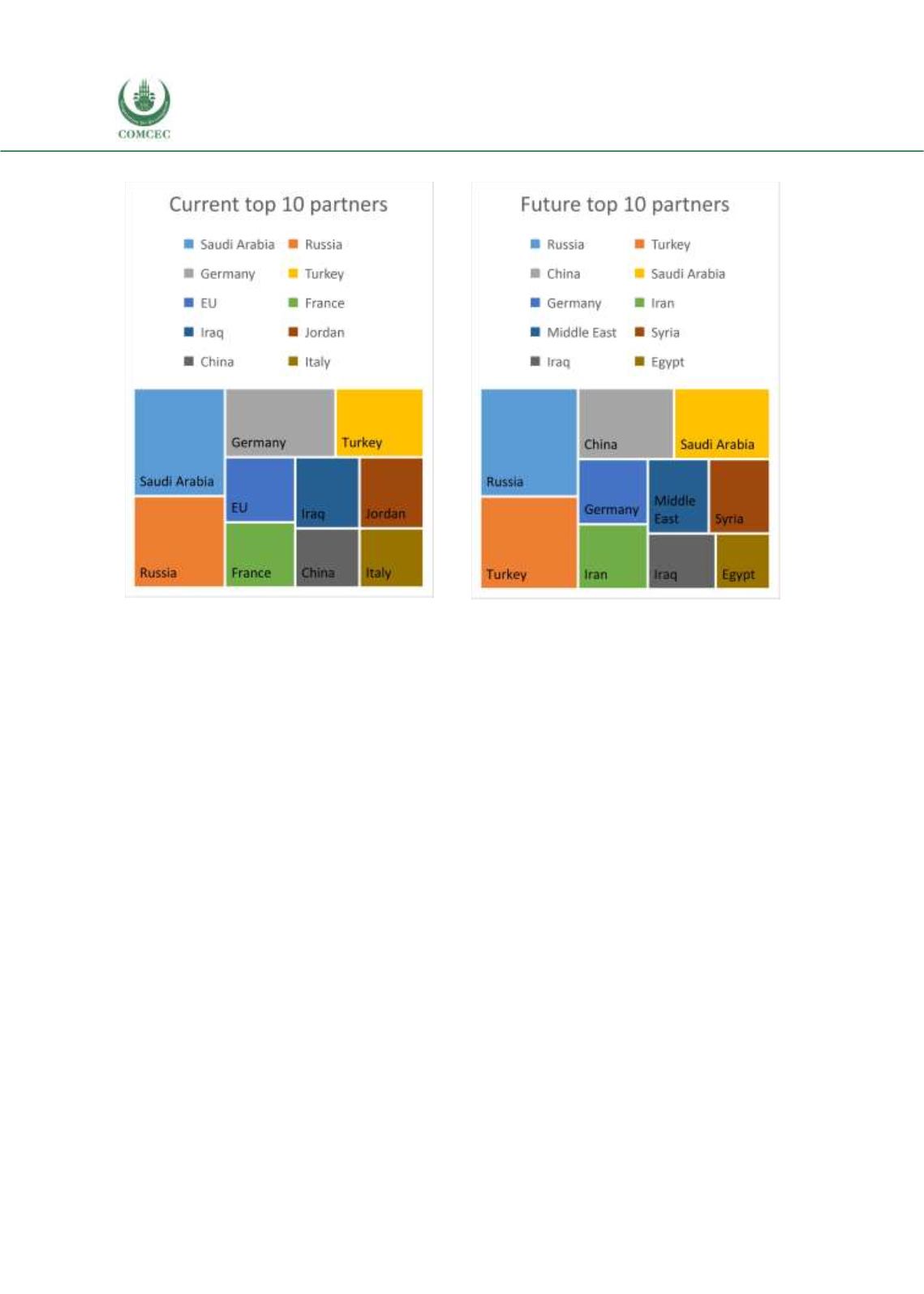

Reviewing Agricultural Trade Policies
To Promote Intra-OIC Agricultural Trade
68
Figure 3. 16 Top 10 Agricultural Trade Partners: Current vs. Future
Source: Authors’ calculations
One multiple-response question in the survey is designed to investigate the likelihood of trade
agreements across the OIC, asking which particular country or countries out of 56 other member
countries are expected to sign a bilateral trade agreement with the participant’s country. Once
ranked from the top to the bottom share of responses, Saudi Arabia, Turkey, Qatar, Kuwait, and
Iran are ranked as the five most likely countries with which the OIC countries would sign a
bilateral trade agreement in the future. At the bottom of this list are ranked Albania, Brunei-
Darussalam, Guyana, Maldives, and Suriname.
3.6. Conclusions and Lessons Learned
Multiple membership to different regional trade agreements result in overlapping trade rules, a
phenomenon called by Jagdish Baghwati as the "spaghetti bowl" phenomenon (Bhagwati, 1995),
especially in Africa. This has the effect of creating discriminating high tariffs applied by OIC
member countries to others which are excluded from the existing regional trade agreements
with non-OIC countries.
While the OIC is a net exporter in some products and a net importer in other agricultural
products, the overall balance of agricultural trade records a trade deficit for the OIC as a whole.
The Asian group is the largest exporter of agricultural products in the OIC. The Asian group is
the largest importer of agri-raw materials while the Arab group is the largest importer of agri-
food products and fish products. The African group’s share in exports and imports is smallest
among the OIC country groups.
Over the last decade, the share of the non-OIC countries in exports and imports of agricultural
products decreased slightly in favor of the OIC group countries, particularly for the African and
the Arab group countries. There is an increasing trend of agricultural trade within the groups,
pointing to an unexploited trade potential.


















